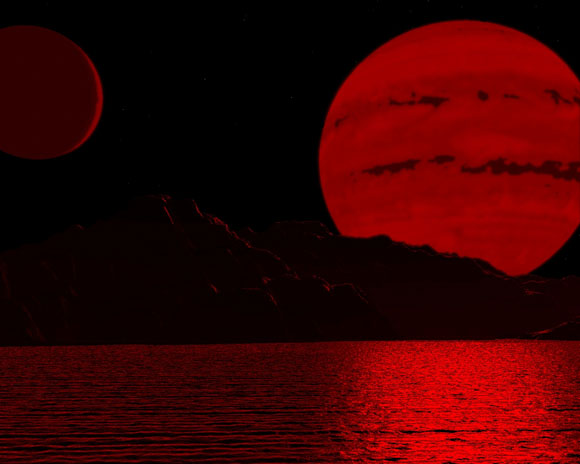I recently finished my playtrough of Plants vs. Zombies. When the game came out it was universally praised for being highly addictive. When I first tried it some time ago I was expecting a simple but perpetually engaging core gameplay with ton of polish and additional content around it – the familiar anatomy of addictive games. But Plants vs. Zombies didn’t really seem like this. Something was missing. Finishing it confirmed my initial hunch: It doesn’t really have any gameplay. There are elements in place that could make up gameplay but they it’s enough to ignite that magic spark. It’s a Brown Dwarf.

In a nutshell: A star is like planet Jupiter but so huge that it burns itself up. A Brown Dwarf is something in-between. Larger than a gas planet but not quite a star.
To explain what a Brown Dwarf is, here is a short astronomy tangent. A star starts out as a vast cloud of gas. The cloud slowly condenses due to it’s own gravity into a dense sphere. As it gets tighter and tighter, the temperature and pressure at it’s core rises. This continues until the conditions inside the ball of gas reach the point where thermonuclear fusion of hydrogen occurs – the same thing happening at the detonation of a hydrogen bomb. But because the ball of gas is at least 70 times the mass of Jupiter at this point, it doesn’t explode like a bomb. The gravity keeps everything together. The ball of gas continues a steady thermonuclear burn. It becomes a star.
A Brown Dwarf is a failed star. It the result when the initial cloud of gas was too small to create the conditions to ignite that thermonuclear fire at the core. Instead of burning up like a star, a Brown Dwarf will basically just sit there and glow dimly. In fact, the planet Jupiter could be understood as a tiny Brown Dwarf. It’s a huge ball of gas after all. But in order for Jupiter to become a star, it would have been around 70 times more massive.
Back to Plants vs. Zombies. It’s just like that. I played the game and as more and more plants were introduced I waited for that moment where the elements would click into place and create equilibrium of forces to play around with. But that moment never comes. The new plants just keep on coming. New zombies also keep on coming. You use the plants to kill the zombies. That’s it. There is no catch. There are sometimes zombies that need to be killed with a specific plant. You can just do that and there is nothing that stops you from doing that. Sure, there are some mild strategic decisions such as which plants to chose or in which order you build the stuff. But in the end, I was able to easily solve level after level using the same build over and over again. The only thing that made my try different approaches was curiosity, boredom and decency.
Of course the game has lots of other qualities. The zombies and plants are creative, super-cute and beautifully animated. The writing is hilarious. I always looked forward to check new items in the almanach, not because I wanted to know what they do but because their descriptions were so funny. The mechanic of collecting sun works perfectly for touch devices.
Yet, I can’t help feeling that beneath it all, there is not enough at the core. In other strategy games players are rewarded for recognizing patterns. You need to find ways to maximize you resources so you can gain an advantage. In tower defense games you are successful if you put your towers at the spots where monsters will spend a long time – at corners for example. In certain tower defense games you need to place your towers in such a way that monsters will be required to take an especially long route, allowing you to fire at them for a longer period of time. Quite often, there is a balance to strike. In Starcraft, you need to decide how much of your resources you put into building up your infrastructure and how much you spend into amassing an army. Build too much units and you will end up with a technologically inferior army. Build too much buildings and you will have nothing to fight with.
Plants vs. Zombies has none of that. It just has interactions that are reminiscent of those other games. You build stuff that shoots at stuff. But there are hardly any interesting decisions to make. It’s just a ton of eyecandy and polish.
Or maybe I’m just an old, jaded gamer. Maybe Plants vs. Zombies is deep and engaging for people, who never even heard about games like X-Com. Or maybe even worse – perhaps I just haven’t recognized the game’s genius. Help me out here. Am I the only one?






Two player mode has a lot less choices to be made, and although I could not understand why I kept losing against my friend, maybe there is more to get there.
I frequently hear that the “game” is just the tutorial, and that most of the fun lies in the minigames and puzzles, many of which are more difficult and require more strategic thinking.